The Shell House
|
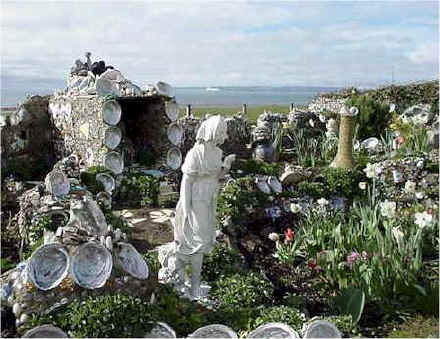 |
|
Perched
on cliffs overlooking the panoramic sweep of Bournemouth
bay is a house with a very curious front garden. It is known
locally as the Shell House. It's not too difficult to see why it
has that name.
|
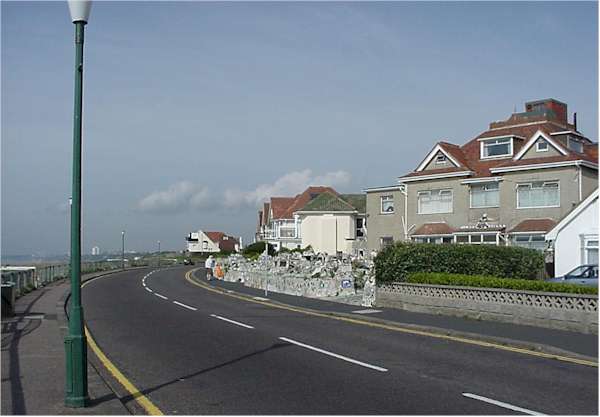 |
|
For
over 30 years the man who lived in this house, spent all his spare
time filling his front garden with a strange mixture of grottos,
ponds, wishing wells, lighthouses and other miniature buildings,
all covered in mosaics.
|
|
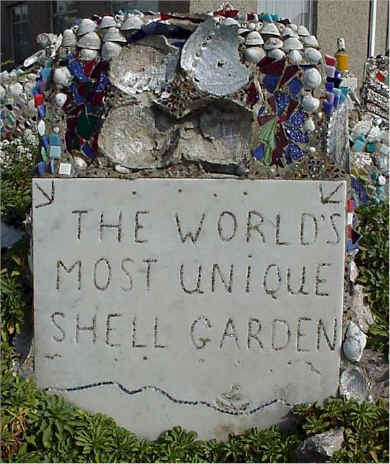
|
|
I
think this sign is a bit of an exaggeration, but the garden is
certainly unique in this area! Bournemouth is a large tourist
resort and many of the visitors to the town stay in hotels
and guest houses nearby. You can often see families, loaded down
with bags for a day out, popping into Shell House for 10 minutes on their way down to the
beach.
|
|
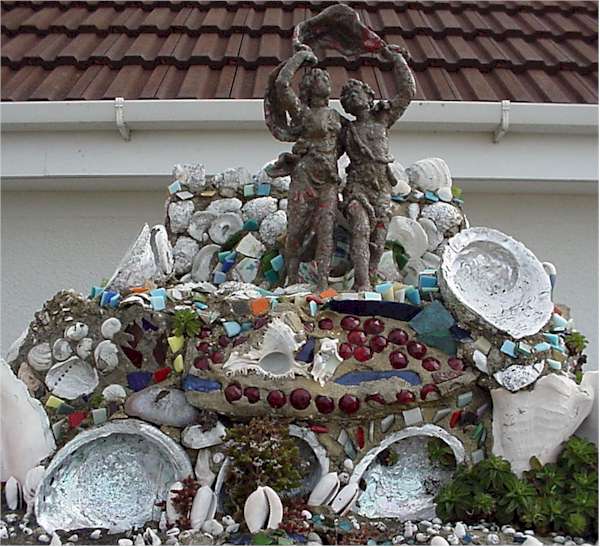 |
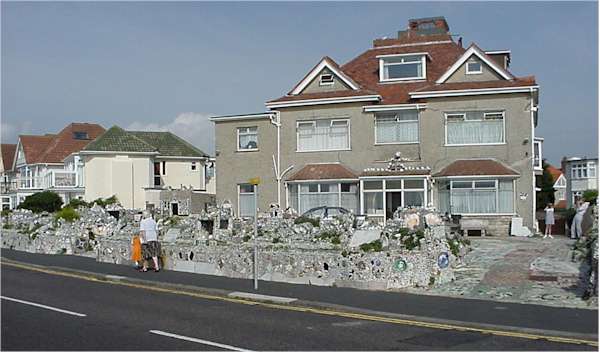
|
|
As
you can see from the following photographs every corner of this
garden has been covered with mosaics made from shells, stones,
glass, old bits of china, broken statues and anything else that
came to hand.
|
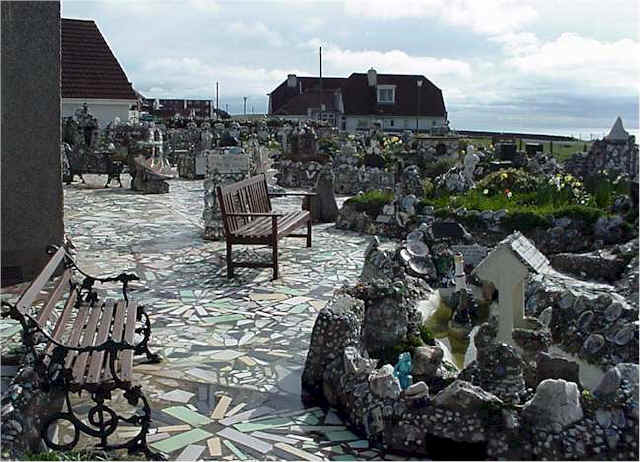 |
Even
the ground is completely covered with mosaics. The garden
benches are provided for visitors to sit down and enjoy the
view.
|
|
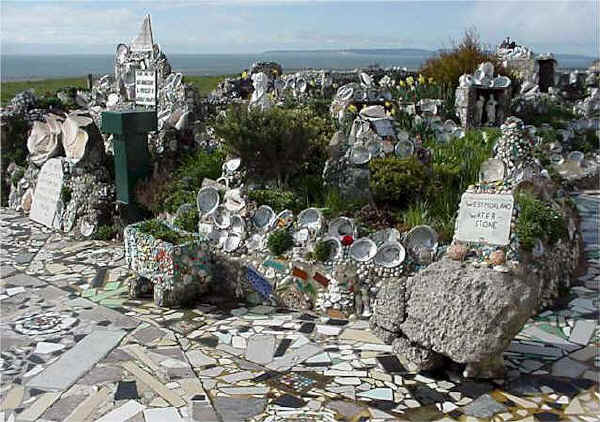
|
In
Spring and early Summer some flowers and a few shrubs manage to
peek through between all the ornaments.
|
 |
|
As you
can see from the metal plaque, which is on display in the garden, this is all
the work of a man named George Howard. He came from a poor background
and was one of 16 children in his family. From
1948 he spent all his spare time creating these mosaics. Entrance
to the garden is free. If visitors wish to make a donation to one
of the charities they support, they can put coins in a collection
box, or throw them into a wishing well.
|
|
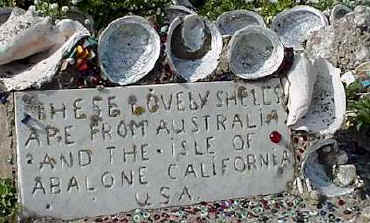 |
|
Throughout
the garden there are signs like the one on the left, telling us
where the shells come from. There are supposed to be shells from
every continent.
Of course
many of the smaller shells in the garden have come from the
local beaches, one of which is only a short walk down a cliff path
from the house.
|
|
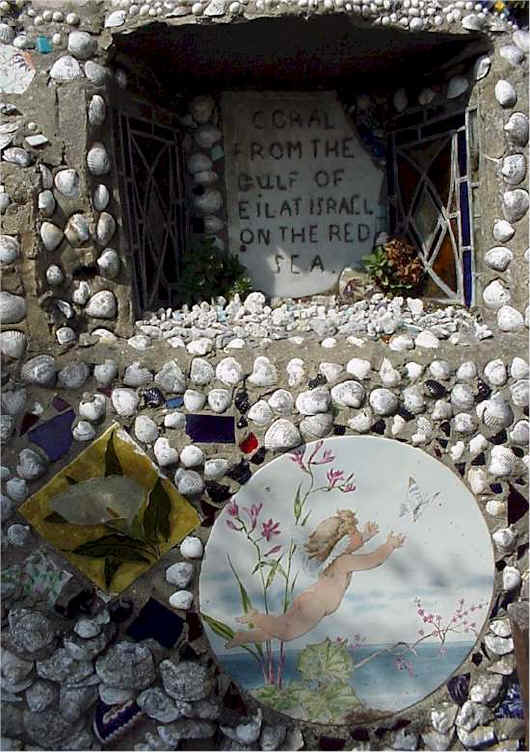
|
|
The
coral fragments here look rather sad, but I like the plate
beneath it. The tile is rather attractive too. I think all these
little cockle shells surrounding the objects must have come from
Bournemouth beach.
|
|
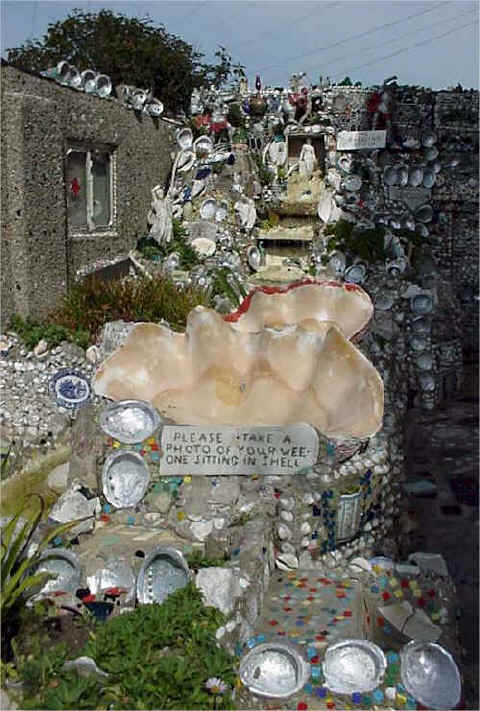
|
|
This
is the largest shell in garden. The inscription on the sign
reads 'Please take a photo of your wee one sitting in shell' (
it should read 'sitting in the shell' but obviously he ran out
of space ). 'Wee one' is a Scottish expression meaning 'small
one', or child.
|
|
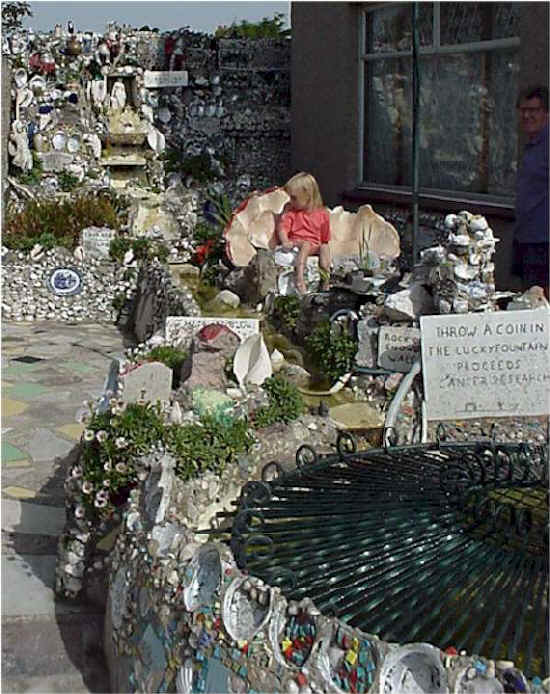 |
|
As
you can see from the photo on the right this child is trying out
the chair, ready to have her photo taken.
|
|
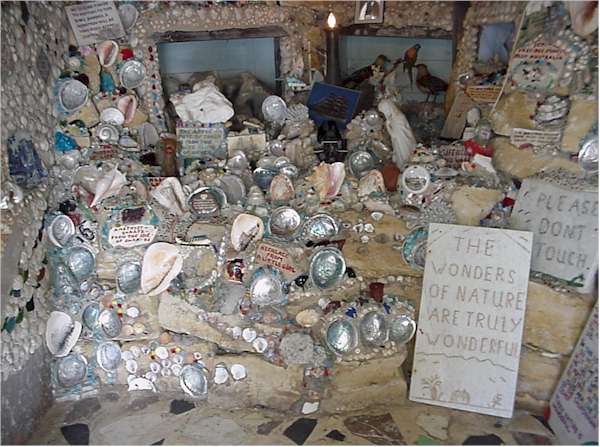
|
The
garden contains two grottos that you can enter. A 'grotto' was originally
the name given to a small cave that added an attractive element
to a landscape. During the 18th and 19th centuries there was a
fashion for creating them in the in the grounds of stately homes
to give a 'romantic' look to the scenery. The interiors of these
grottos were also often decorated with shells.
Here they are
not quite so grand! The largest one is the size of a small
garage. You can enter it and look at a lot of memorabilia
connected to the shell house. There are books containing records
of donations made to charity and framed letters from visitors.
Along one wall is the strange mixture of objects and notices
that you can see in the photo on the right.
|
|
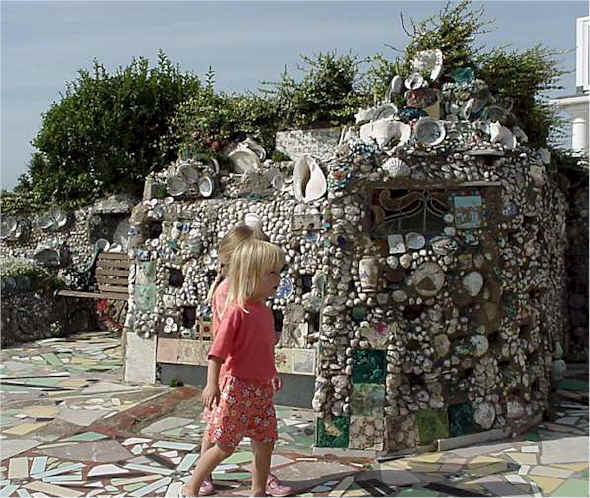
|
|
The second
grotto is smaller, as you can see on the left, but more popular with
younger visitors who love to clamber down the few steps it takes to
enter this tiny room. It is richly decorated inside with a variety of
tiles and other objects. Pretty coloured glass insets provide some
light.
In
this picture we can see some of the details of the decoration
beside the steps leading down into this second grotto. Some of these
Victorian tiles would be really quite valuable now!
|
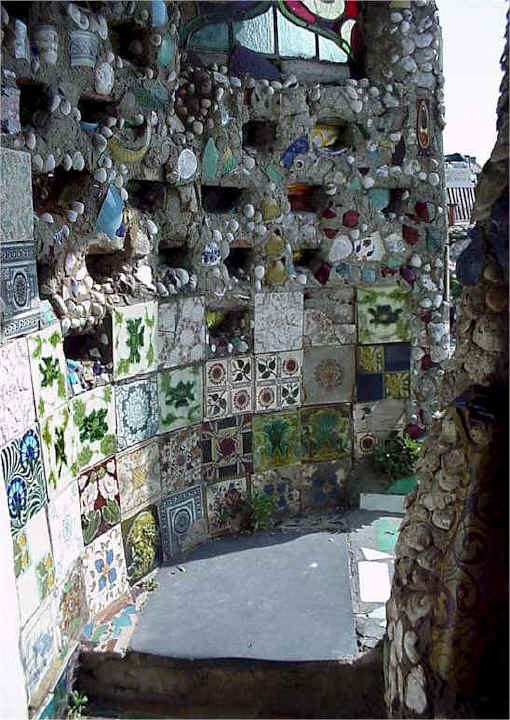
|
| |
| |
| |
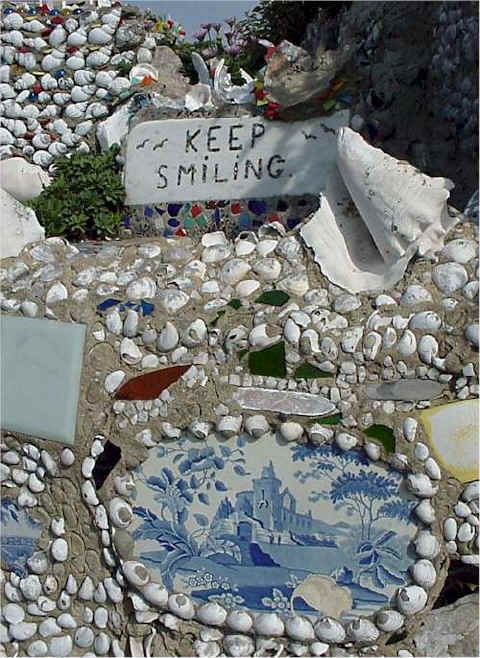 |
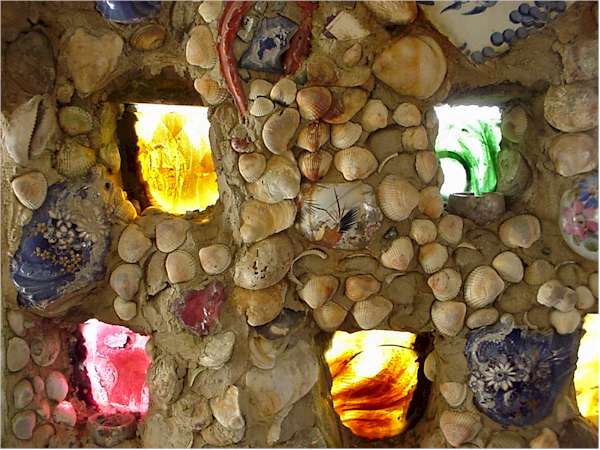
|
|
As
you wander around the garden you can see all sorts of interesting
things, if you look closely.
One
of the first things to notice are the many old pieces of broken
china. Some of the 19th century blue and white plates in
particular are wonderful quality. They would probably have
have been thrown away long ago if they had not been incorporated
into these mosaics. I suppose you could say that the garden is
an exercise in recycling.
|
|
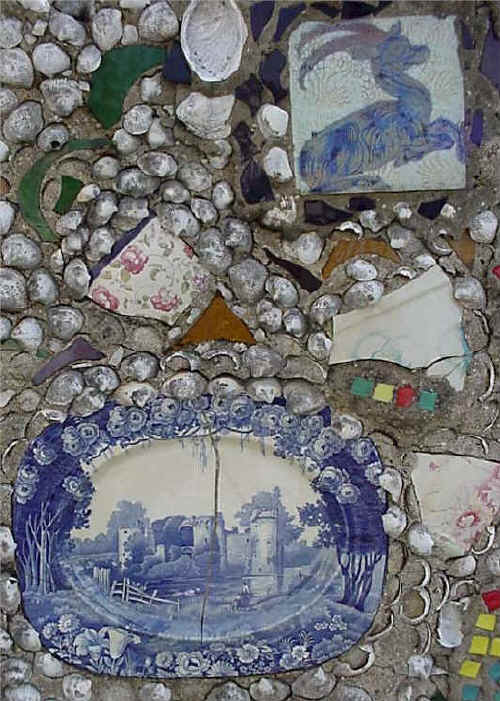 |
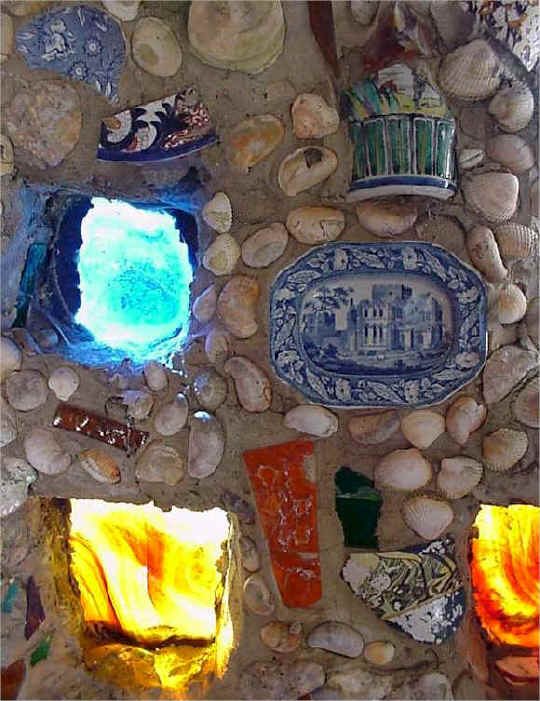 |
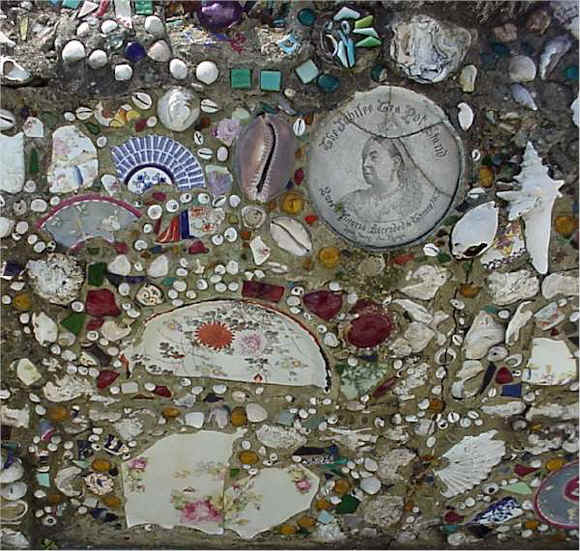
|
|
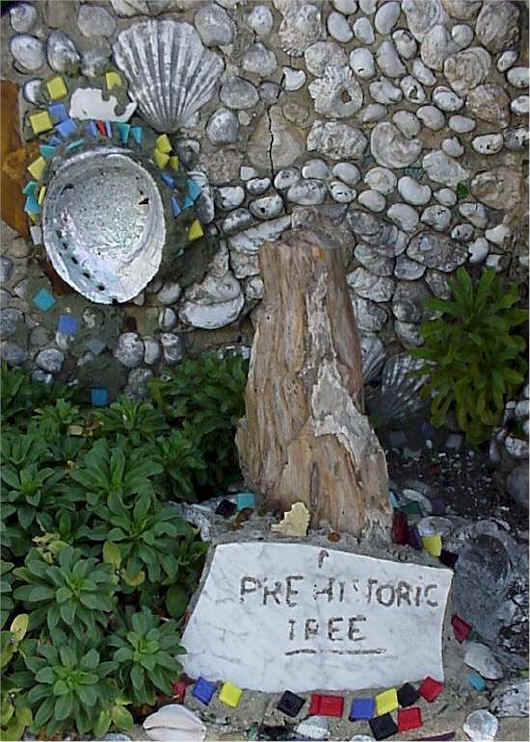
|
There is even
a small piece of a prehistoric tree. I don't know where that came
from, but it certainly wasn't found locally! Further along the
Dorset coast there is an area where many fossils have been
found, but those are from ancient seas and do not include trees.
|
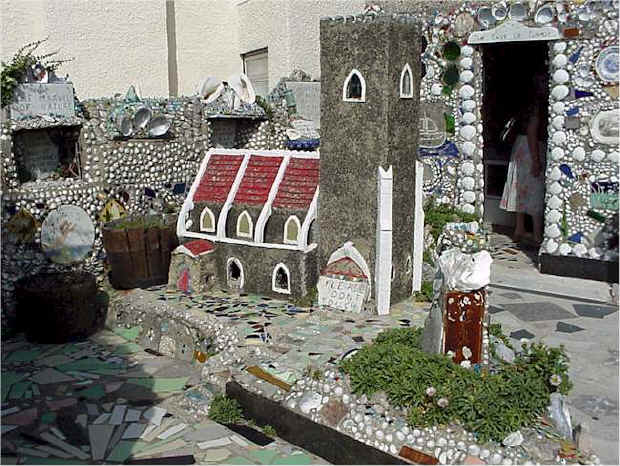
|
|
This little
church is a favourite with visitors, especially children, who
like to climb on it, which is why there is a 'Please don't
touch' sign, no doubt. Behind the church is the entrance to the
largest grotto. Over on the wall, a sign says 'the marvels
of nature', referring to the shells and also the coastal
view that you can glimpse from that spot.
|
|
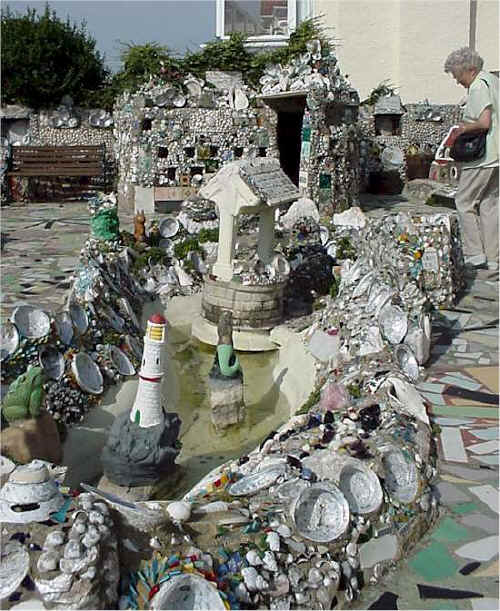
|
|
There
are several small water features in the garden. You throw a coin
into the wishing well and make a wish. People say that the wish won't come true if you
tell anyone what it is. The money is collected for
various charities.
|
|
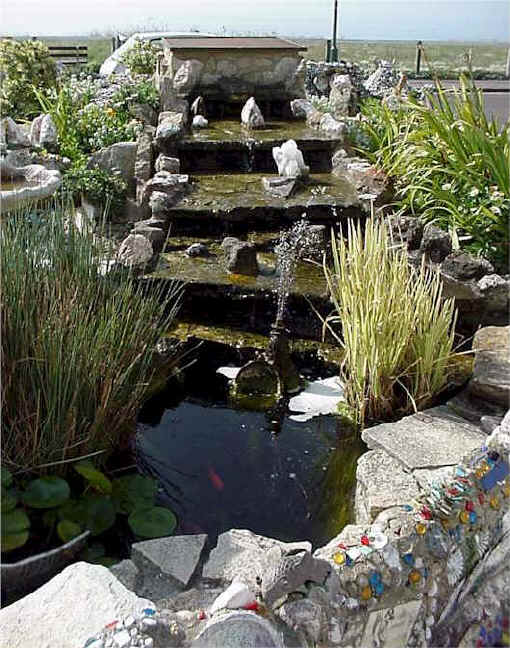
|
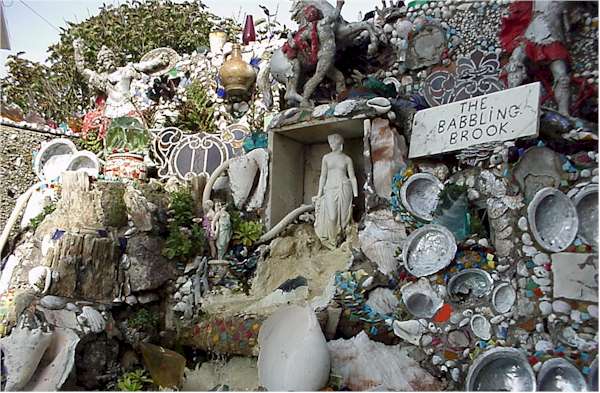 |
|
A
small stream flows down from this wall. A 'brook' is a name for a
small stream. People ' babble' when they talk in an excited way
and a brook is supposed to make a similar sound.
|
| Dotted
around the garden are a number of these little buildings that look like
shrines. In actual fact they are purely decorative, there is no religious
purpose to them. The figure in the picture on the left appears to be Queen
Victoria. She is placed above a sign saying ' Welcome Folks'. Not very
dignified for such a regal lady. |
|
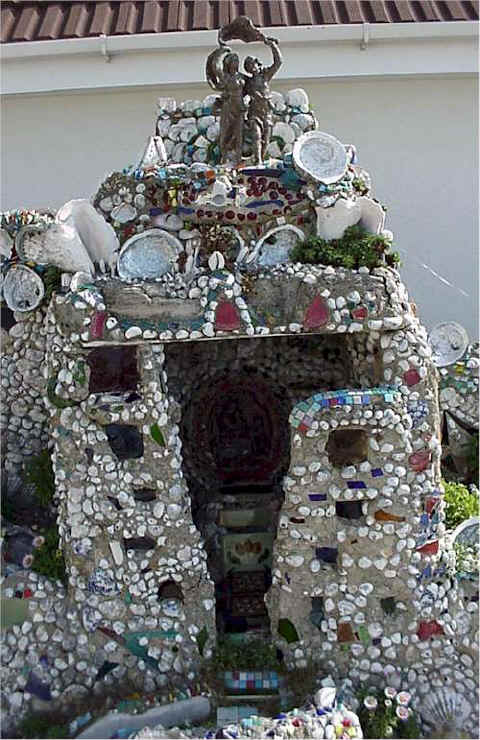 |
| |
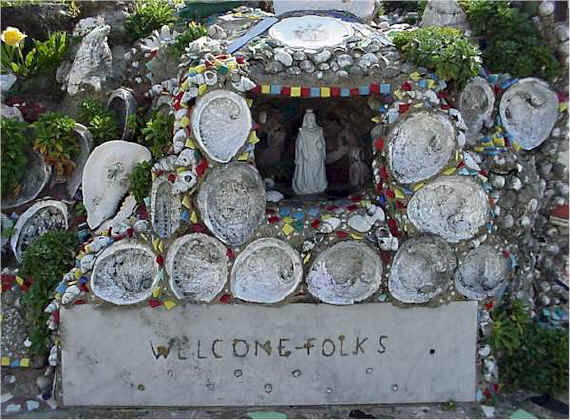 |
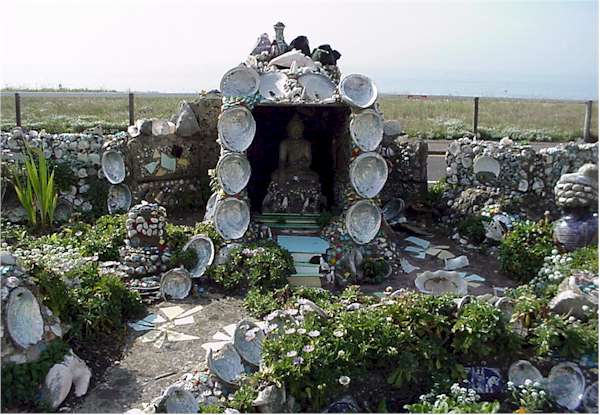 |
|
This
one contains a statue of Buddha, but I don't think George Howard
was a Buddhist. He also included some Christian objects on the
site.
The
inscription below these two figures reads-
'She
sells sea shells on the seashore'
It's
what we call a 'tongue twister'. The idea is to say it a
few times quickly, without making a mistake.
Difficult.
|
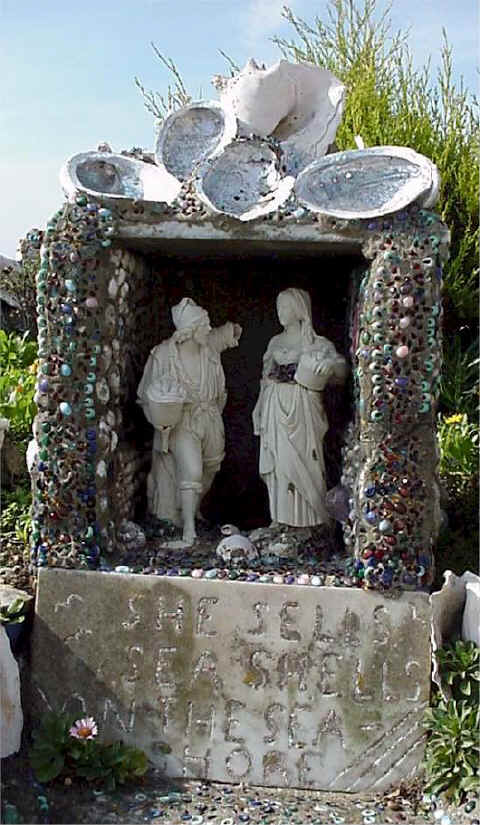 |
On
this page we would normally list the details of where to find the Shell
House. However, sadly, since I took these photos, this shell garden
has been dismantled. The condition of the shells was
deteriorating and the owner decided he could no longer go on
maintaining it. Many people in Bournemouth were very saddened to see
it go.
|
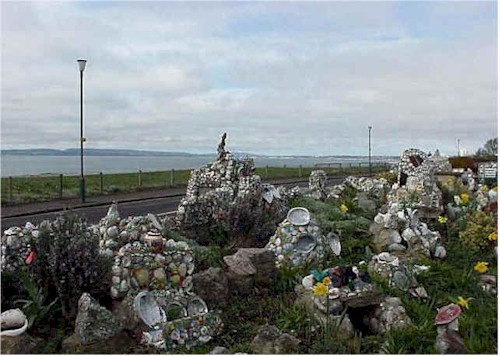 |
|
| perched
on cliff |
When you
say something or someone is 'perched' you imply that they are resting on
the edge of something.
'The girl perched on
the edge of the chair as she watched the exciting film.'
Birds often perch on
a branch.
|
|
| guest
house |
A term frequently
used for a small hotel, often run by one family.
|
|
| peek |
To peek means to
sneak a quick glance at something or someone.
'The shy child peeked
around the door to see who the visitors were.'
|
|
| romantic |
This word is most
commonly used in relation to love,
'The young couple
spent a romantic afternoon together, walking in the woods.'
but it also has a
wider meaning. The 'romantic' scenery mentioned was artificially created with lakes and woods, grottos and temples, to
invoke a feeling of fantasy and as a reaction to the ordered, classical
style that had previously been popular.
|
|
| grand |
The grottos are not
very grand. Here it means that they are not very large or impressive.
This word has many
other meanings.
A grand-mother is the
mother of one of your parents.
In slang a thousand
pounds is a 'grand'.
You might say that
you feel 'grand' if you are feeling particularly wonderful, but this is
an old-fashioned expression not used much now (unless you are Wallace
and Grommit).
|
|
| memorabilia |
These are objects
that are connected with an event, place or group. Here it refers to
objects connected with Shell House. A person might also collect objects
connected with the Olympic Games, a television programme or club of
which he is a member. |
|
| 'dotted'
around the garden |
A casual way of
saying that ornaments are placed at uneven intervals around the garden,
as if you took a pencil and drew dots randomly on a sheet of
paper. |
|
